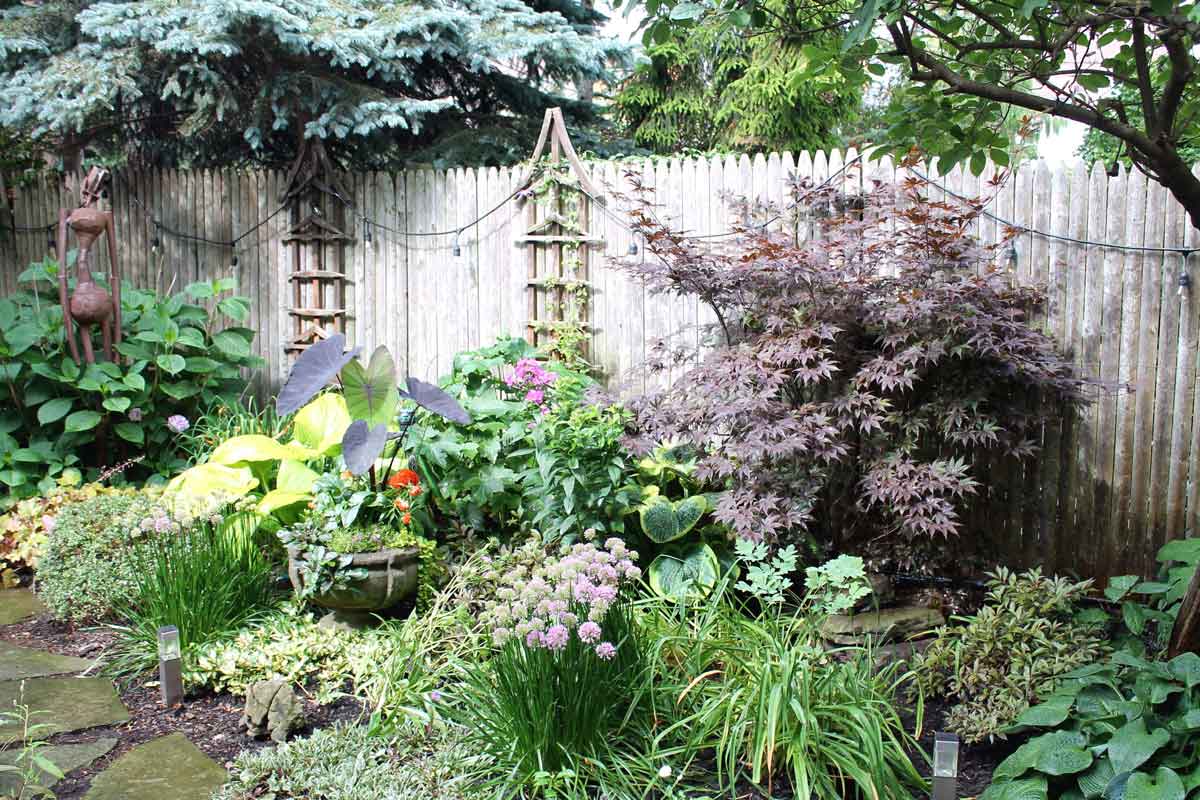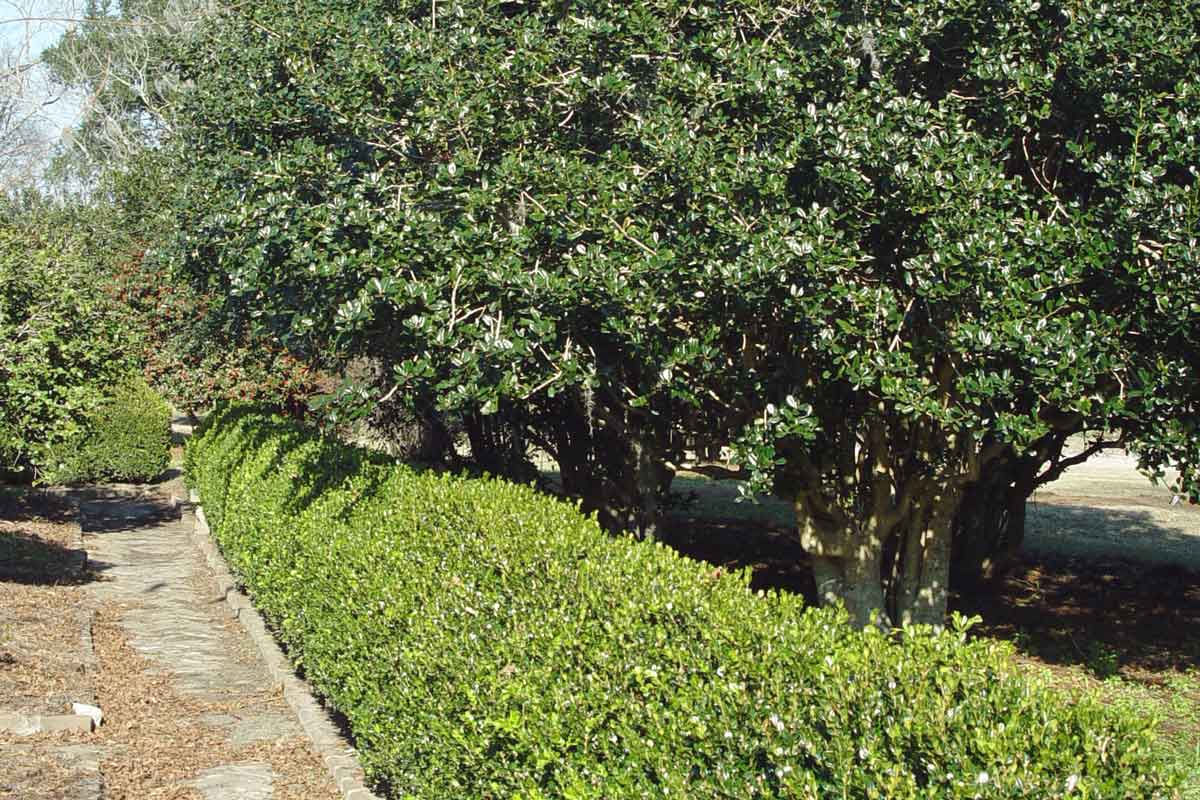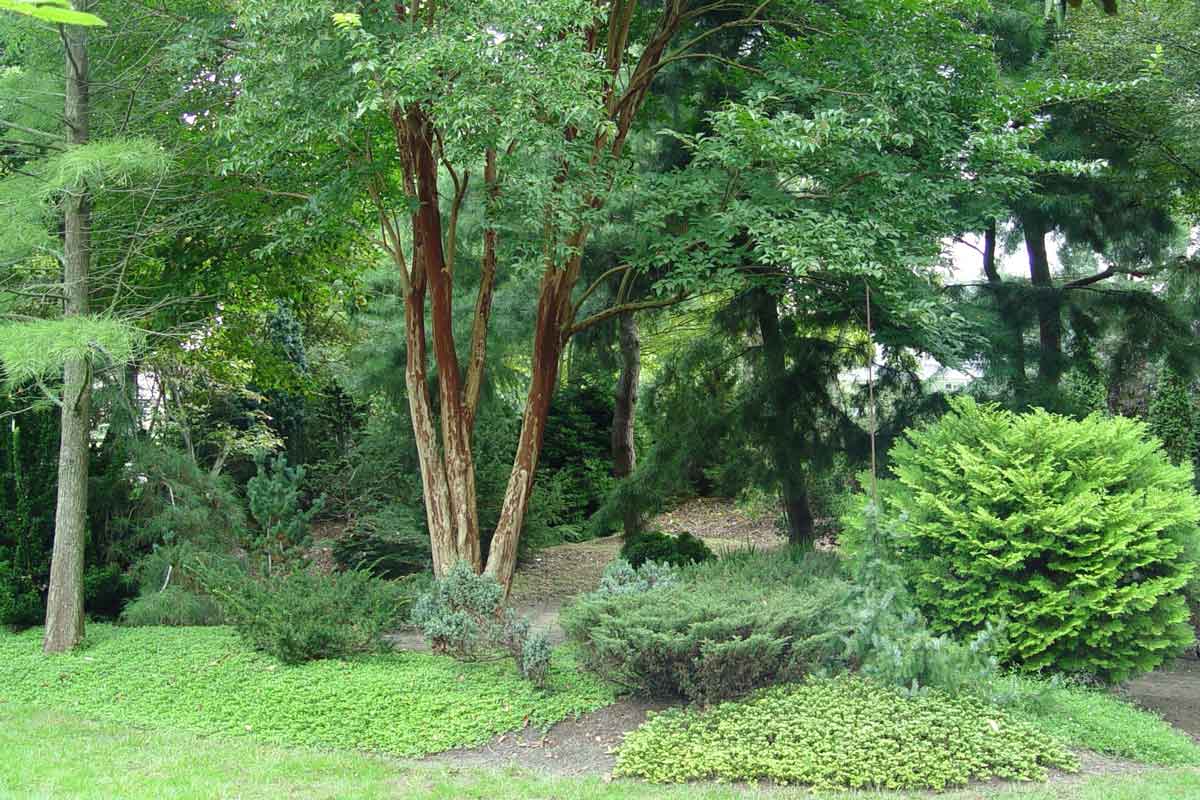Five Hot Gardening Trends in 2023
From outdoor living spaces to bulb lawns, here are four key trends experts see shaping gardeners' plans this year.
Privacy has become a high priority on the landscaping wish list in the aftermath of a COVID pandemic that put new value on our back yards. Numerous studies unearthed findings that homeowners began viewing their yards as prized “safe havens” and “retreats” during pandemic cocooning.
If your yard could use more privacy, here are eight ideas:

A privacy fence provides screening as well as a backdrop for mixed beds. George Weigel
A solid fence gives instant screening, but check first to see if any deed restrictions, neighborhood bylaws, or municipal codes govern the installation.
A lot of times, neighbors like the idea of a fence as much as you do, so you might even strike up a cost-sharing deal.
Finials, lattice trim, flower boxes, and vine-covered trellises are ways to make otherwise bare panels attractive.

An evergreen shrub hedge with taller trees behind help to shield this yard. George Weigel
A line of tall evergreens – most often arborvitae, holly, laurels, yews, or Leyland cypress – function much like a living fence, although they’ll take time to grow and fill in.
Hedges can be trimmed to control size and give a formal look, or they can be left to grow naturally. (Allow adequate space in that case.)
Hedges don’t have to be all of a single species, though. Using two or three types of plants in patterned or alternating lineups may be more attractive to your eye – and it offers some forgiveness in case something comes along to devastate a single species choice you picked.
If you don’t need year-round solid screening, consider a border mix of tall and bushy evergreens and flowering shrubs.
This approach looks more “gardeny” than a straight wall of evergreens, is more wildlife-friendly because of the diversity, hedges your bets against a pest wiping out everything, and involves little to no pruning maintenance if you space so that neighboring plants touch as they mature.
Besides the aforementioned upright evergreens, tall-shrub options include rhododendrons, ninebark, panicle and oakleaf hydrangeas, viburnums, winterberry hollies, and red-twig dogwoods.
The most “gardeny” option is planting a wide, mixed border, layered down from the tallest plants closest to the border down to the shortest ones at the front of the beds.
Example: start with trees and/or tall evergreens at the border, then step down to six- to eight-foot-tall bushy evergreens and flowering shrubs, then step down to a third layer of shorter shrubs, ornamental grasses, and/or tall perennials.
You’ll eat up more yard space and plant budget, but this approach is colorful, diverse, and gets the privacy job done without it looking like an obvious privacy motive.

Strategically placed trees and shrubs provide privacy in this corner. George Weigel
This uses a combination of small to mid-size trees to give a fairly quick, tall canopy along with bushy plantings underneath that grow up to meet the tree branches.
Example: plant crabapples with blue hollies underneath or American hornbeams with dwarf goldthread falsecypress underneath.
The bushes give you low screening, then the trees take over to screen up to their eventual mature size.
This approach makes most sense when you need higher screening than a fence can give, such as when the neighbor is uphill from you.
The disadvantage is that you’ll only have privacy during warm weather when the leaves are on the trees (other than whatever height you can achieve from an evergreen underplanting).
This approach is almost as fast as fencing but much more colorful.
Trellises or lattice walls will give some screening immediately, but once vines grow, you’ll end up with nearly a full blockout.
Annual vines such as purple hyacinth beans or scarlet runner beans can grow six feet or more by mid-summer, while clematis, climbing roses, ornamental kiwi vines, and climbing hydrangea are among the best long-term, woody-vine options.
Outdoor “curtains”
Instead of a fence or trellis, how about hammering in a few posts and then mounting weather-tolerant non-plant screens?
Bamboo matting is one good example, but you could also go with fabric or even a homemade stick wall made out of woven branches.
Plant shrubs, evergreens, flowers, and maybe a tree or two around and in front of it so the effect is a garden and not just a blank wall hanging out in the open.
Maybe just a few well placed “blockers” might be enough to knock out an isolated view or two you don’t want.
Position yourself where you want screening, then scope out the line and width of where you want the view to disappear.
A single evergreen tree planted in exactly the right spot might solve the privacy issue in a few years. Or use just one of the above tag-team groupings or a combination of a few evergreens and vine-covered trellises.
A shed, gazebo, pavilion, or some other outdoor structure also can do double-duty as a view-blocker.